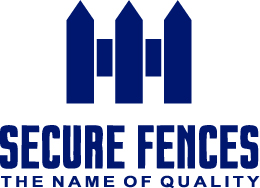Is Vinyl Fencing Less Expensive Than Wood?
When homeowners in Southern California start exploring fencing options, one of the most common questions is: Is vinyl fencing less expensive than wood? At first glance, wood might seem like the more budget-friendly choice, but when you consider long-term costs, durability, and maintenance, Los Angeles vinyl fencing often proves to be the more cost-effective option.
Let’s break down the actual cost of ownership between wood and vinyl fencing so you can make the best decision for your home.
The Initial Cost: Vinyl vs. Wood
It’s true—wood fencing usually costs less upfront. If you’re installing a basic wood fence, you might spend slightly less per linear foot than on a vinyl alternative.
However, here’s where it gets interesting: vinyl’s durability and low-maintenance nature make it a more intelligent long-term investment.
FeatureWood FenceVinyl Fence
Initial Cost Lower Slightly higher
Maintenance High (painting, staining, repairs) Low (occasional rinse)
Average Lifespan 10–15 years 25–30+ years
Long-Term Cost High Low
Over time, the extra money you spend maintaining a wood fence far outweighs the slightly higher upfront investment of vinyl fencing in Los Angeles.
The Real Long-Term Cost of Wood Fencing
Los Angeles has a dry, sunny climate that’s not kind to traditional wood fencing. Constant exposure to UV rays, Santa Ana winds, and the occasional rainstorm all take a toll on wood. Homeowners often need to:
- Paint or stain every 2–3 years
- Replace warped or rotting boards
- Treat for termites or insect damage
- Deal with cracked or splintered wood
These costs add up fast—especially if you’re hiring professionals to do the work.
Los Angeles vinyl fences, by contrast, require little more than a hose and a few minutes of your time each season. No paint. No splinters. No rot. That long-term reliability is what saves homeowners thousands over the life of the fence.
Durability and Weather Resistance
Vinyl fencing in Los Angeles is specifically designed to handle harsh weather conditions. Whether you’re in the Valley, near the coast, or up against desert winds, vinyl doesn’t warp, crack, or fade.
Wood, on the other hand, soaks in moisture, contracts in heat, and can decay if not properly sealed. Even pressure-treated wood has a shelf life—and that usually means replacing sections of fence every few years.
When you compare the two, vinyl lasts longer with less effort and fewer surprises.
Maintenance Costs Over Time
Let’s break down the approximate maintenance costs over 15 years for a typical 100-foot fence:
Wood Fence:
- Initial staining/painting: $300–$500
- Maintenance every 2–3 years: $200 x 5 = $1,000
- Repairs & board replacement: $500–$1,000
- Total: $1,800–$2,500+
Vinyl Fence:
- Cleaning (DIY or occasional pro): $200 max
- No painting, no repairs, no termite treatments
- Total: $200–$300
The difference is staggering. Over time, vinyl wins in both cost and convenience.
Aesthetic Appeal and Curb Value
Vinyl fences have come a long way. Today’s Los Angeles vinyl fences come in a wide variety of styles and colors:
- Privacy fences
- Traditional white picket
- Ranch rail
- Decorative accents
- Wood-look finishes
Because they don’t fade or weather, vinyl fences retain their appearance for decades. That clean, fresh appearance boosts curb appeal and home value—especially when you’re getting ready to sell.
Wood, though beautiful at first, requires ongoing work to maintain its appearance. Without it, the fence can quickly turn gray, weathered, or uneven.
Resale Value and Buyer Appeal
Los Angeles homebuyers look for low-maintenance, energy-efficient, and worry-free features. A worn-out wood fence can detract from your home’s exterior, while a crisp, clean vinyl fence signals modern care and style.
Buyers often see vinyl as a bonus. It’s safer for kids and pets, it doesn’t require maintenance, and it’s resistant to pests. These benefits can add real value to your property—and even help your home sell faster.
Environmental Impact: Vinyl vs. Wood
Wood is a natural material, but that doesn’t automatically make it more eco-friendly. Many wood fences require chemical treatments to resist rot and pests, and those chemicals can leach into your soil.
Vinyl fencing, particularly modern products made from virgin PVC or recycled content, avoids those treatments and lasts much longer—meaning less replacement and less waste.
At Secure Vinyl Fencing, our Los Angeles vinyl fencing products are 100% recyclable, lead-free, and manufactured with eco-conscious processes.
Vinyl Offers More Than Just Cost Savings
Here’s what you get with vinyl fencing:
- Weatherproof strength in LA’s sunny and dry climate
- Low to no maintenance for decades
- Modern curb appeal that doesn’t fade or crack
- Long-term savings far beyond initial investment
- Lifetime value that wood can’t match
Wood might seem like the budget option, but it comes with hidden expenses and frequent upkeep. Vinyl offers lasting peace of mind, style, and financial savings.
Why More Homeowners Are Choosing Los Angeles Vinyl Fencing
At Secure Vinyl Fencing, we’ve helped hundreds of homeowners upgrade from wood to vinyl—and the response is always the same: “Why didn’t I do this sooner?”
We specialize in:
- Custom fence designs
- Local manufacturing and installation
- HOA-approved fencing solutions
- Color and style matching for any property
We know Los Angeles vinyl fencing inside and out, and we make the switch from wood easy, affordable, and seamless.
Final Thoughts: Is Vinyl Fencing Less Expensive Than Wood?
In the short term, wood might cost less. But over the long term, Los Angeles vinyl fences save you more in every way—maintenance, repairs, time, and stress.
If you want a fence that holds up to LA’s climate, looks great year after year, and helps raise your home’s value, vinyl is the clear winner.
Ready to Upgrade?
Contact Secure Vinyl Fencing today for a free consultation. We’ll walk you through your options, show you how vinyl compares to wood, and help you build a fence that lasts a lifetime—with no regrets and no hidden costs.
Secure Vinyl Fencing – Built to Last. Designed for LA.


